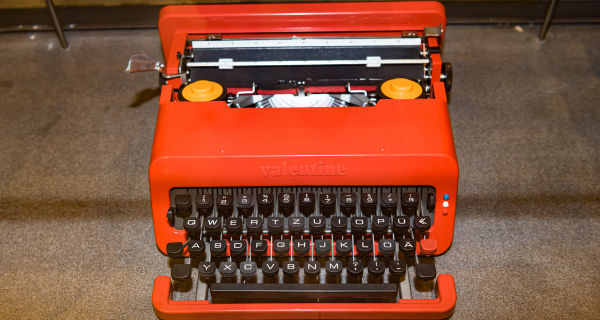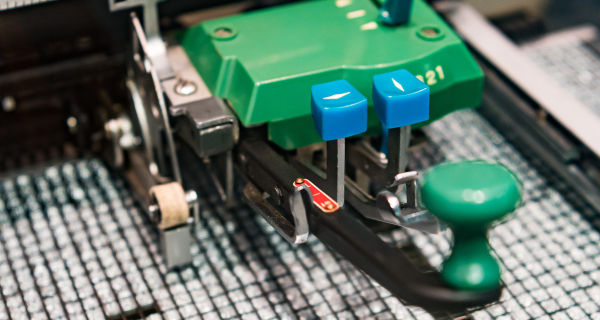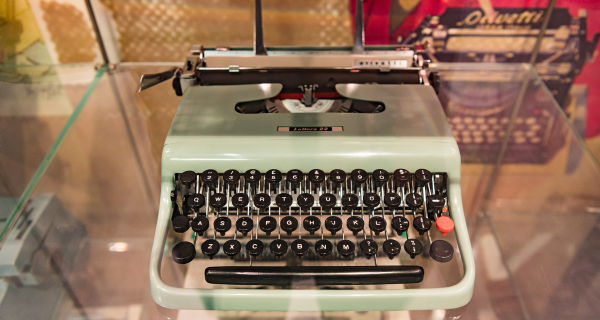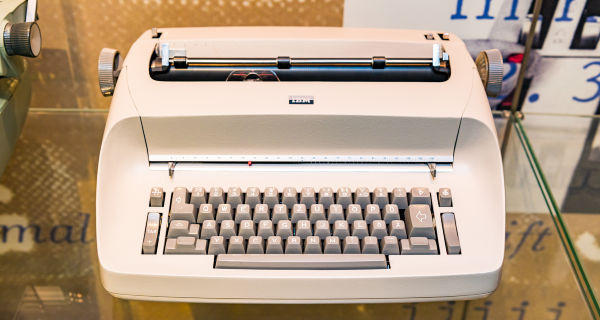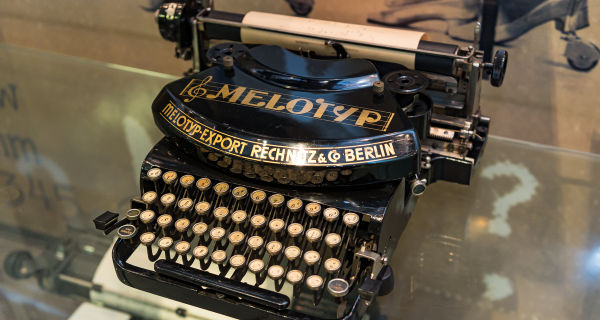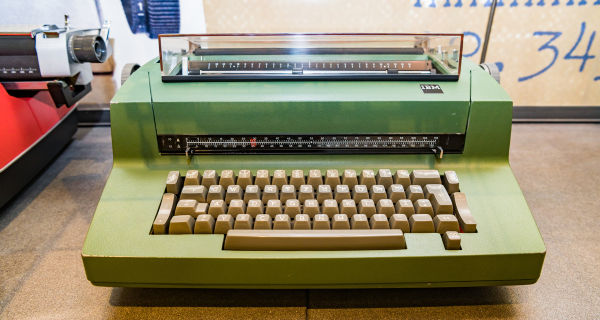After 1900, typewriters became a mass product made chiefly by American and German companies. They had already become omnipresent in American offices by about 1915.
Around the middle of the 1920s, take-overs and mergers had concentrated the American typewriter industry in four companies. Only the best models were a commercial success because reliability and speed counted more than a low purchase price for a business machine in continuous daily use.
Underwood No. 5 - a great success in the USA
The Underwood No. 5 had set the standard in 1900, and its technology was the basis of almost all designs for 62 years. In the 1920s, half of all typewriters in the USA were Underwood models. This huge success, however, blinded the company's management to the need to further improve their product. Their competitor Royal, which only had appeared on the scene in 1906, not only introduced a variety of user-friendly improvements in detail but also established a first-class sales system. By 1939, Royal was the typewriter manufacturer with the highest sales in the world.
Two mechanical typewriters from the 1920s and two from the 1950s can be seen in the exhibition as typical representatives of mass production. Although a mature model named the Mercedes Electra had already been launched on the market in 1921, electric typewriters were not widely successful until after World War II. Some models from 1954 to 1969 illustrate this trend towards electric typewriters.
The Italian company Olivetti managed to stand out successfully from its competitors as a result of the unconventional design of its office machines.
IBM introduced major technological innovations, including the IBM Executive, a fully electric typewriter with proportional spacing, which appeared on the market in 1947. In 1962, the IBM 72 Selectric (golf ball) typewriter broke the predominance of the Underwood principle.
A Chinese typewriter and a typewriter for musical notes round off this section of the exhibition.
